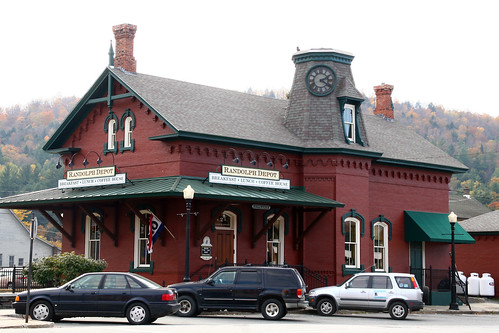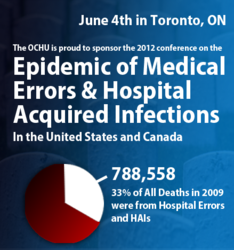August in the Green Mountains
Going as green as possible
If you’re going to Vermont, take the train. From the Washington, D.C., region I took the Vermonter, an eleven-hour train ride, with coast or wetlands much of the way. From New York State one takes the Ethan Allen Express, equally scenic though for a much shorter and more inland route. Either way, one has beautiful or changing scenery across the states, and shifting stages of passengers–lovely scenery not to speed through, with changing shifts of different people getting on for different reasons. For a late stretch of the trip there was a young guy sitting beside me–a local transplanted to the West Coast–who appropriately is planning to go into cabinetry and furniture making.
His home terrain in New England is right for it.
Once at my destination–Rochester, Vt.–you can hire a local handyman to ferry you to and from the station for a reasonable cost. He will even drive you from and to an airport, fifteen or more miles away, for fifty bucks. Ask for Dennis.
I spent the first week of August in Rochester, central Vermont near the White River, on Route 100, one of the towns cut off by Hurricane Irene in 2011. Since I was visiting a very old friend, the interpersonal interaction was the most important part of the trip, but the travel itself was also a set of reminders, of the boons of Vermont and of the damage done by our interaction with nature.

Some local damage from Hurricane Irene
Central Vermont was enhanced by beautiful weather most of the trip, as luck would have it, cool like the latitude, with some afternoon and evening thunderstorms just strong enough to bring much-needed rain that plumped up the puny blackberries. Vermont is having a bumper crop of corn this year–unlike the Great Plains. The train passed along field after field of high green corn. Since most local corn was planted to feed dwindling numbers of dairy cattle, perhaps some of it will be transported where it is more direly needed. Vermonters have enough of it to play in.

Not only the mountains are green
On a smaller agricultural scale, picking berries is one of the best Green Mountain activities in summertime–where permissible. We ate lunch twice in the excellent, laid-back Rochester Cafe, eating avocado and falafel sandwiches. When we went back, I gave the cafe a couple of bags of berries I had picked that morning. Dessert was on them, the server announced, setting down my Very Berry Pie. The pickings came from a residual blueberry orchard on a private farm that regrettably cannot be named, bushes so loaded with fat blueberries that our arms got tired before we could harvest the ripe ones. The blueberries and blackberries should last another week, now that they’ve had rain. All the local eating places were good. Dinner one night at the Huntington Inn was fresh ravioli stuffed with lobster. Wave the occasional fly away; that screen door has to open for service to the porch.

Seasoned Booksellers, Rochester, Vt.
Arts and crafts feature large locally. Another Route 100 cafe is attached to a book store as well as to a good bakery. Judy Jensen’s Clay Studio features Jensen’s pottery and sculpture in a constantly changing inventory; more to come in early September. The store also carries handmade weavings and pottery by other artisans (802-767-3271). A local art gallery, Anni Mackay’s BigTown Gallery, stands next door to the bike-repair business with which Mackay, posh British accent and all, has family and business connections: She is married to the bike-repair shop’s owner, and the August art exhibition at the gallery, “the Big Bike Show,” celebrates Green Mountain Bikes’ 25th anniversary. The gallery regularly hosts poetry readings, some by writers connected with Middlebury College or with the Bread Loaf school.
Warning: Rochester has a small population (1,171), but it’s not a blink-and-you-miss-it. If you blink, particularly at high speeds, you’re more liable to miss the police who monitor traffic whizzing through the town, and rightly so. Aside from the small-town need for revenue, the highway is the town’s main street, and pedestrians cross it.
The mountain subdivision near Rochester where I stayed is built like a set of Zen retreats–words not typically descriptive of a residential subdivision. Walking the family dogs up and down the hills and winding drives is a test of endurance, especially with big dogs.
Driving the hills is also a test, but the day trips are worth it. Many of the down-home venues are authentic, and pleasing. The ‘rock shop’, a place my old friend used to take her young children, is the Riverknoll Rock Shop, on Route 100 near Stockbridge, Vt.–a nice dusty shop left by the lapidary who founded it, the current owner’s husband, offering everything from geodes to pendants, some local, some USA, some imported; carvings, specimens, jewelry reasonably priced.
Supporting local artisans, like eating local produce, comes naturally in central Vermont. Thrifts and antique stores, by contrast, are thoroughly picked over and have been for years–“since the Seventies”–my friend comments matter-of-factly. The Bowl Mill, in Granville, Vt. (45 Mill Rd.), makes many wooden pieces besides bowls and has a small junktique attached. Burl wood bowls and other handmade wooden objects come in various sizes and can also be ordered. The business goes back to 1857. Green Mountain Glassworks, a few miles south of Rochester on Rt. 100, is also a longstanding business, though less so. When glassblower Michael Egan is at work, you can watch the process from a few feet away, and Egan is open and informative, candidly discussing the occasional screw-ups when he drops or breaks a piece in the process. Finished glassware on display in the shop includes paperweights, drinking vessels, and large vases and bowls.

Quarry near Rochester, Vt.
The local stone is green serpentine, called Verde Antique–prominently featured in some older bank buildings and monuments nearby, which also seem to be memorializing the stone itself, and now being quarried again at the vertiginous Rochester quarry. Park by the side of the road, do not expect hosts or tour guides, and goggle through the wire fence at quarrying in progress down a few hundred sheer vertical feet of previous digging.

Joseph Smith memorial
The more spiritual sites in Vermont are more familiar–the Joseph Smith Memorial near South Royalton, a site sacred to Mormons; Robert Frost’s cabin near the town of Ripton, a site sacred to English majors; the Bread Loaf School and Middlebury College; the city of Middlebury itself. All are worth a trip, both for the history and for the sightseeing. The obelisk pictured, at the Joseph Smith memorial, has a 38-foot piece of granite standing up top, pulled up to the hillside site by men and mules. Neither Frost’s cabin nor the L.D.S. site is visible from the highway. Each is barely indicated, in fact, by an inconspicuous road sign.
Farther off the beaten path, figuratively speaking, are some of the local practicalities. The terrain may be rough and rocky, but treatment of customers is not. Rutland, Vt.–Vermont’s largest city and maybe least ‘Vermont-like’– is home to a couple of business entities that should be emulated elsewhere. Wilcox Pharmacy, for one, is an actual compounding pharmacy, meaning that when you fill a prescription for something such as Tetracycline, they make it up there, so you’re not getting it from some offshore supplier, laced with non-FDA approved ingredients. The pharmacy was busy at the time we went in, meaning that their standards have not hurt their business. Similarly, in the realm of mortgages and mortgage refinancing, the lender who does not ‘bundle’ your mortgage and re-sell it is definitely the road less traveled by, as far as business models go. That would be Vermont Merchants Bank, in Rutland, which has not bundled a mortgage since c. 1982. Eye-opening all around.
Yes, Vermont is a long train ride away, for most of us. But you can stock up on books to read, both directions; the local libraries had book sales in August.

Randolph, Vt., depot
Randolph, with my train station, is another pretty town, and its old train depot, now a trackside cafe, makes a good breakfast for that last meal before leaving. The cafe is also a good place to load up on sandwiches and snacks for the train, food not being, alas, among the things Amtrak does well. Local residents eat breakfast there–a good sign. Sierra Club slogans notwithstanding, it may be impossible to avoid tourist traps in any popular destination such as the Green Mountains. However, the presence of local Vermonters shows that you’re not just in a tourist trap.
It’s still sad to leave. August, the high season as the Gawain-poet called it, is greener in Vermont than in most places. It is good to be reminded that Vermont has vivid colors other times besides October, and in years not damaged by drought, August is vibrant. Lilies thrive; pearl-like daisies grow wild by the road among the black-eyed Susans. Blue forget-me-nots grow wild there, too, but earlier, about June. On a previous trip, walking in the woods I saw a neon-orange caterpillar crawling on, and nibbling at, an equally vivid orange mushroom. Which colored the other, or which was protective coloration, was impossible to tell. Except in drought years, the floor of the woods is covered not with dead underbrush, but with waving ferns. The woods are lovely, dark and deep because there is less glare from an over-hot sun in summer, and the ground is scoured by snowstorms in winter.
Thus the damage from Hurricane Irene is even more of an ongoing shock. Covered bridges and other bridges were broken, fields covered with mud and debris, and roads and highways were washed out, some only recently replaced. Irene was not irenic.

Irene damage
Worse, the spill of gravel, rock and dirt one sees everywhere in the rivers and streams has made the streambeds even shallower. The riverbeds and streambeds are more filled up than they were, the natural waterways therefore shallower. Less depth means a more constricted channel–in other words, if there were another flood equivalent to Irene in the same area, it could be even more devastating, in spite of all the new road paving and bridge rebuilding.
Regrettably, there is a natural tension between the booming industry of travel writing, which may encourage people to travel, causing or contributing to yet more wear on the environment that travelers and travel writers appreciate.





















